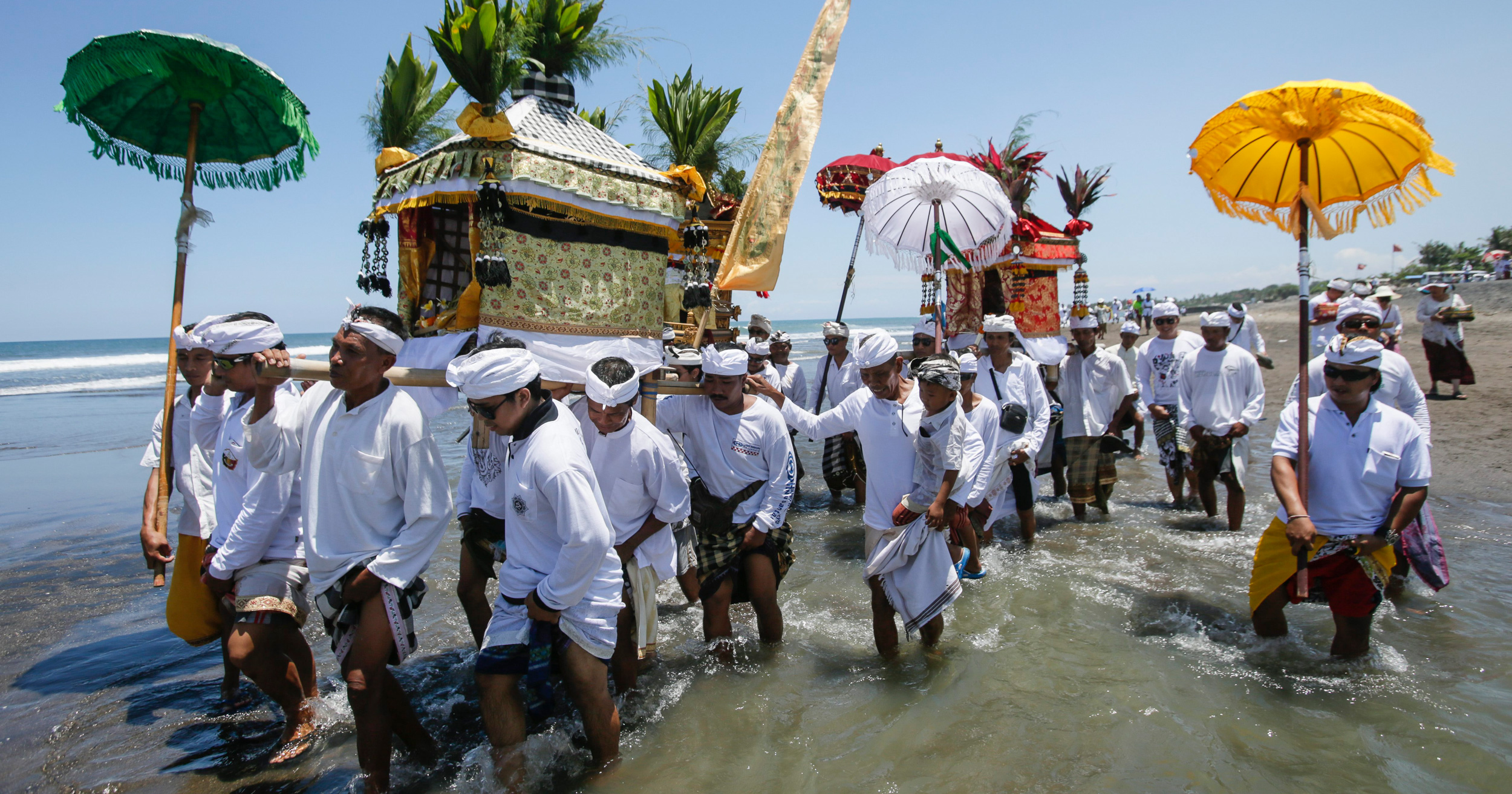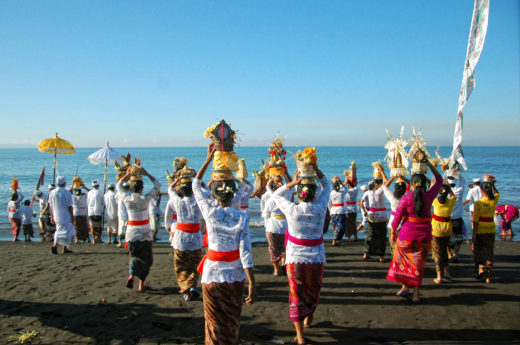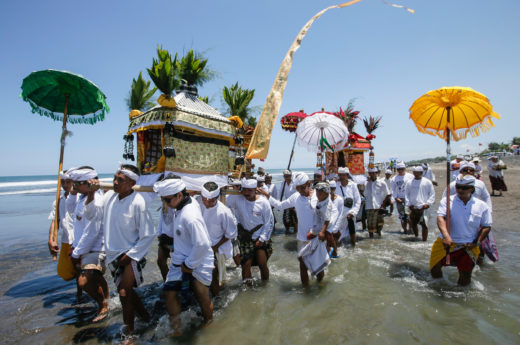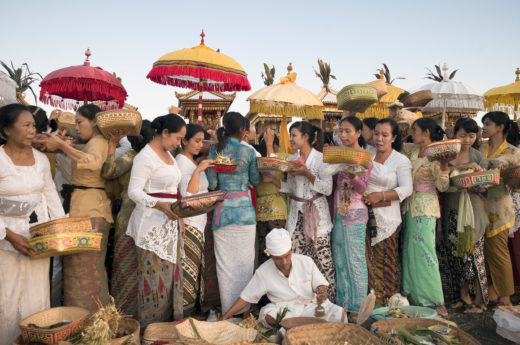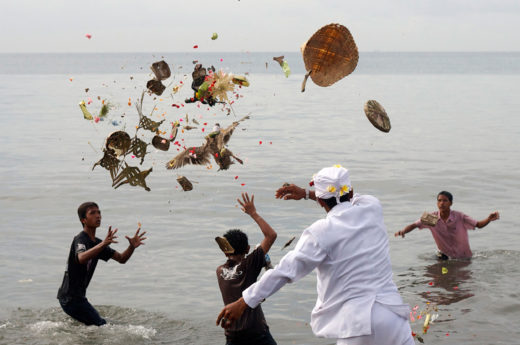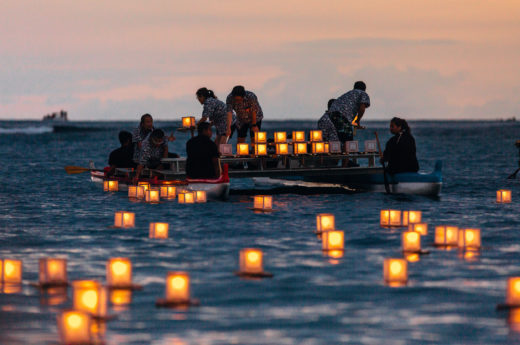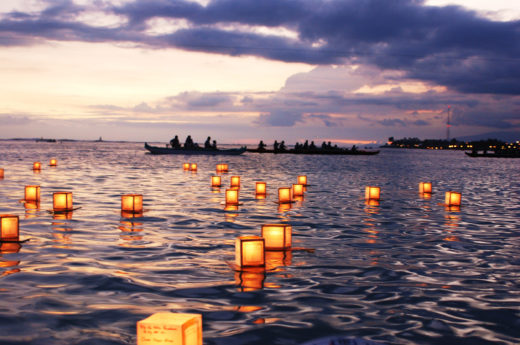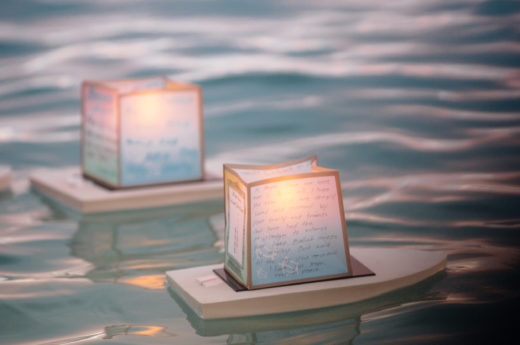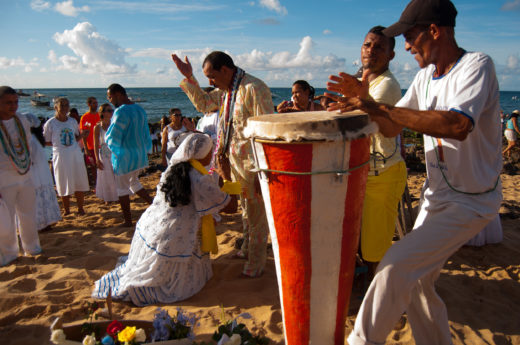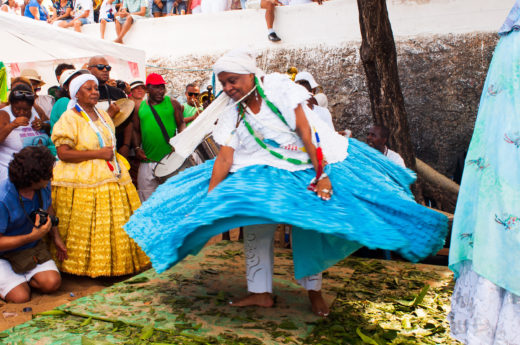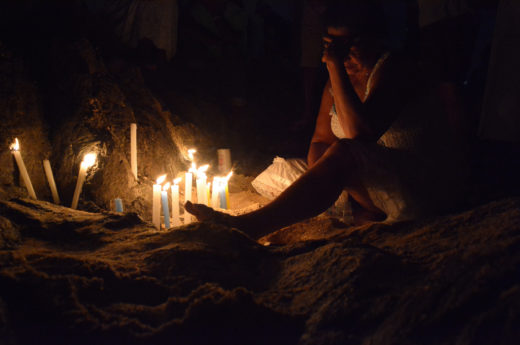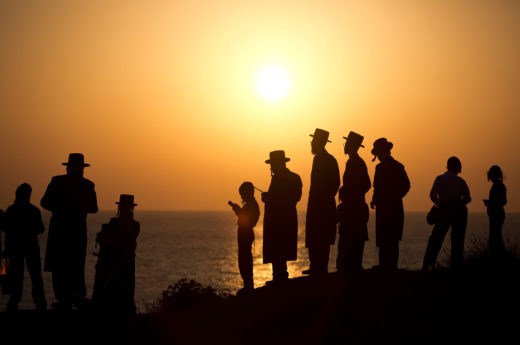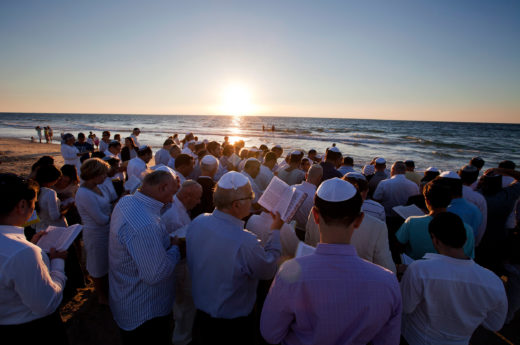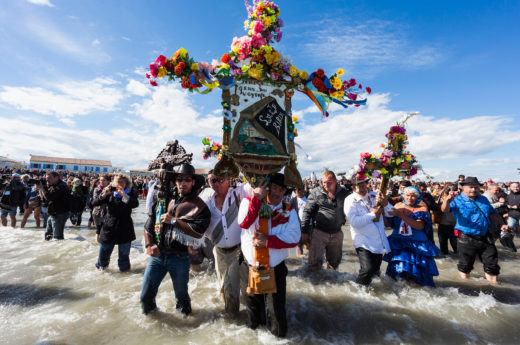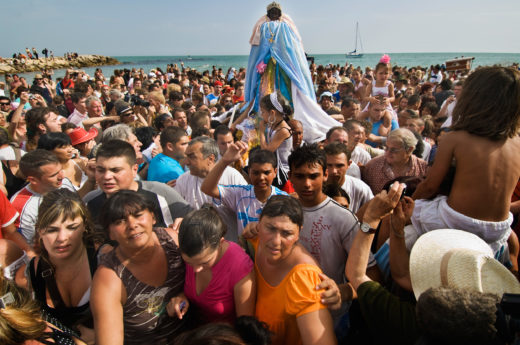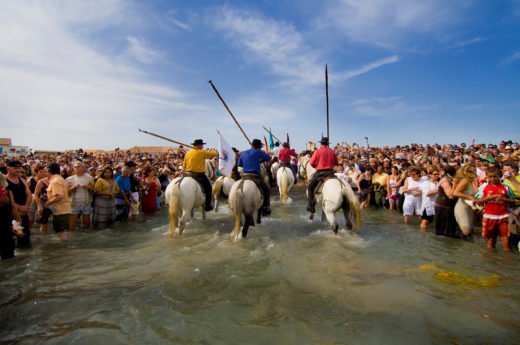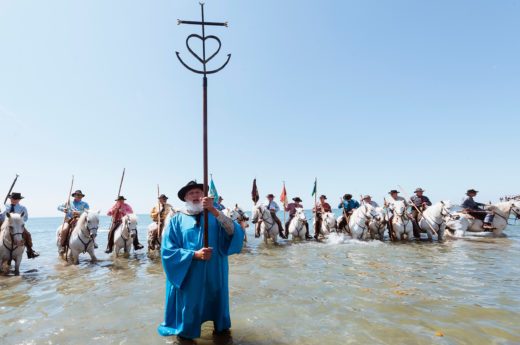Ceremonies at Sea
From Indonesia to Israel, many religious and cultural groups head to the beach to revel and repent.
Article body copy
Powerful, purifying, and mysterious, the ocean plays a central role in many cultural and religious ceremonies. Some believe the deep blue is home to gods and goddesses, while others look to the waves in search of grandma’s freely floating spirit. Here are five oceanfront ceremonies that bring people together to pray to higher gods and the high seas.
Melasti
Bali may be one of the only places in the world where the new year is celebrated in silence and stillness. On this holy day, known as Nyepi, all activity on the island stops to encourage quiet introspection—shops are closed, cars are parked, and lights are turned off. In preparation, Balinese Hindus practice a series of rituals to rid their towns and villages of evil spirits that have taken up residence throughout the year. A few days before Nyepi, they carry small statues that embody gods and deified ancestors from temples and homes to the sea for a symbolic washing ceremony called Melasti. To the beat of traditional music, large processions of devotees—dressed in their best temple attire and bearing offerings—dip the holy idols into the water to purify them and recharge their supernatural powers.
Lantern Floating Hawai‘i
On Memorial Day in the United States, some 40,000 people descend on Ala Moana Beach on O‘ahu’s south shore to light lanterns and send them out to sea to honor the military’s fallen and others who have passed away. Organized by the Shinnyo-en Buddhist community, the ceremony, which began in 1999, was conceived as a way to blend Memorial Day traditions with Hawai‘ian cultural practices. In the lead-up to Lantern Floating Hawai‘i, the public is invited to visit Honolulu’s Shinnyo-en Buddhist temple to write messages for loved ones on pieces of paper that are then affixed to six wood-frame lanterns the size of coolers. At the emotional event, individual lanterns are also available for people to personalize: some attach photos, others decorate with flowers, and many children draw colorful pictures. As the Sun sets, the sea lights up with more than 6,000 lanterns for a moment of collective remembrance.
Festival of Iemanjá
Revered as the ultimate guardian of the ocean and all who enjoy it, Iemanjá, the African goddess of the sea, is worshiped by countless coastal Brazilians, particularly those who practice the religion of Candomblé. Iemanjá (also Jemanjá) is fêted in cities across the country at different times of the year. In Rio de Janeiro, the Festival of Iemanjá is celebrated on New Year’s Eve, while in Salvador it takes place on February 2. During the event, believers dressed in white, some carrying statues of Iemanjá, make their way to the beach with gifts for the goddess. Popular offerings include modern beauty luxuries, such as perfume, makeup, hair accessories, and jewelry. To ensure the goddess receives the gifts, many send them to sea in boats. If the treasure sinks, it means Iemanjá has accepted the offering and will grant the gift-giver’s wish. If boats return to shore with cargo, it is because the gifts—and the associated wishes—have been rejected.
Tashlikh
The Jewish new year begins with two holy days known as Rosh Hashanah. Before sunset on the first day (or the second, should the first fall on the sabbath), some Jews gather by the ocean (or another flowing body of water), to symbolically cast away their sins and ask for forgiveness. During the ritual known as Tashlikh (“cast off” in Hebrew), worshippers recite special verses next to the water, including the one from the prophet Micah that inspired the ceremony: “And you [God] will cast all their sins into the depths of the sea.” Following prayers, observers shake out their pockets or their clothing and throw breadcrumbs into the sea.
The Gitan Pilgrimage
For 10 days every May, Gypsies from across Europe descend on the French seaside town of Saintes-Maries-de-la-Mer to honor their patron saint, Black Sara, at the Gitan Pilgrimage. They roll into town in caravans and camp alongside roads and on the beach, awaiting the main event. On May 24, the statuette of Saint Sara, as she is also known, is lifted out of her crypt in the town’s medieval church, mounted on a wooden platform, and paraded to the ocean. As the procession—complete with men on white stallions—makes its way to the beach, thousands of revelers cheer and chant, “Vive Sainte Sara!” Upon arriving at the seashore, the horsemen splash into the water, and Black Sara is immersed in the Mediterranean Sea.

